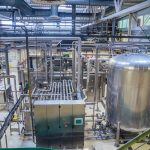Glucose Monitoring
Glucose monitoring in Process Analytical Technology (PAT) refers to the measurement and analysis of glucose levels in a manufacturing or process setting using analytical techniques. Glucose monitoring is commonly performed in various industries such as food and beverage, pharmaceuticals, and biotechnology.
Here’s an overview of glucose monitoring in PAT:
- Purpose: Glucose monitoring is essential for assessing and controlling the concentration of glucose in a process or product. Glucose is a sugar that serves as a vital energy source in many biological processes and is often used as a substrate in fermentation processes for the production of various products like biofuels, pharmaceuticals, and food additives. Monitoring glucose levels helps ensure process efficiency, product quality, and optimal production yields.
- Analytical Techniques: Various analytical techniques can be employed for glucose monitoring in PAT. Some commonly used methods include:
a. Spectroscopy: Spectroscopic techniques, such as near-infrared (NIR) spectroscopy, can be utilized for non-destructive and real-time monitoring of glucose levels. These techniques rely on the interaction of light with the sample, measuring the absorption or scattering properties at specific wavelengths associated with glucose concentrations.
b. Enzymatic Assays: Enzymatic assays involve the use of enzymes that specifically react with glucose, producing a measurable signal. Glucose oxidase-based assays are commonly employed, where glucose oxidase catalyzes the oxidation of glucose, generating hydrogen peroxide or other detectable products that can be quantified using colorimetric or electrochemical methods.
c. Biosensors: Biosensors are analytical devices that integrate a biological recognition element (such as an enzyme or antibody) with a transducer for signal detection. Glucose biosensors typically employ glucose oxidase as the recognition element, coupled with electrochemical or optical transducers to measure the generated signal.
- In-line or At-line Monitoring: Glucose monitoring in PAT can be performed in different modes, depending on the process requirements and design. In-line monitoring involves the continuous measurement of glucose levels directly within the process stream or bioreactor, providing real-time data for process control. At-line monitoring involves periodically sampling the process or product and analyzing it in a separate laboratory or analytical setting.
- Data Analysis and Process Control: Glucose monitoring data obtained through PAT techniques is analyzed and used for process control purposes. The glucose measurements can be integrated with other process parameters to optimize process conditions, adjust feeding strategies, and ensure consistent product quality. Statistical process control (SPC) methods, multivariate data analysis, and modeling techniques can be employed to interpret the data and establish control strategies.
Glucose monitoring in PAT enables real-time or near-real-time assessment of glucose levels in various manufacturing processes. By providing timely and accurate information, it supports process optimization, quality control, and efficient production in industries where glucose is a critical component or substrate.
Lactose Monitoring
Lactose monitoring in fermentation refers to the measurement and analysis of lactose levels during the fermentation process. Lactose is a sugar found in milk and is commonly used as a substrate in fermentation processes for the production of various products, such as dairy-based beverages, probiotics, and industrial enzymes.
Here’s an overview of lactose monitoring in fermentation:
- Purpose: Lactose monitoring is crucial for assessing and controlling the concentration of lactose in the fermentation process. The availability and utilization of lactose directly affect the growth and metabolic activity of microorganisms involved in fermentation. Monitoring lactose levels helps optimize the fermentation process, ensure adequate nutrient supply, and achieve desired product outcomes.
- Analytical Techniques: Various analytical techniques can be employed for lactose monitoring in fermentation. Some commonly used methods include:
a. Enzymatic Assays: Enzymatic assays involve the use of enzymes that specifically react with lactose, producing a measurable signal. β-Galactosidase-based assays are commonly employed, where β-galactosidase catalyzes the hydrolysis of lactose into glucose and galactose. The generated glucose or galactose can be quantified using colorimetric, enzymatic, or chromatographic methods.
b. Chromatographic Techniques: Chromatographic techniques, such as high-performance liquid chromatography (HPLC), can be utilized for the separation and quantification of lactose. These methods involve extracting lactose from the fermentation sample and subjecting it to chromatographic separation, followed by detection and quantification using suitable detectors.
c. Biosensors: Biosensors, combining a biological recognition element with a transducer, can be employed for lactose monitoring. Lactose biosensors typically utilize β-galactosidase as the recognition element, coupled with electrochemical or optical transducers for signal detection. The enzymatic reaction between lactose and β-galactosidase generates a measurable signal proportional to lactose concentration.
- Real-time Monitoring: Lactose monitoring can be performed in real-time during the fermentation process. Online monitoring systems can be integrated directly into the fermentation setup, allowing continuous measurement and analysis of lactose levels. These systems provide real-time data for process control and optimization, enabling adjustments to nutrient supply, feeding strategies, and fermentation conditions.
- Data Analysis and Process Control: Lactose monitoring data obtained during fermentation is analyzed and used for process control purposes. The lactose measurements can be integrated with other process parameters, such as biomass concentration, pH, and temperature, to optimize fermentation conditions, ensure nutrient availability, and maximize product yields. Statistical process control (SPC) methods, multivariate data analysis, and modeling techniques can be employed to interpret the data and establish control strategies.
Lactose monitoring in fermentation enables the monitoring of lactose utilization, substrate availability, and process efficiency. By providing real-time or near-real-time information on lactose levels, it supports process optimization, quality control, and the production of desired fermentation products.

Leave a Reply